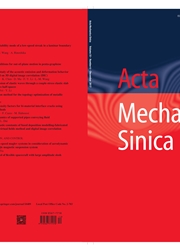

 中文摘要:
中文摘要:
机械敏感性离子通道在多种生理活动中起着极其重要的作用.至今,学者对这类通道的研究分析已经长达20多年.在实验方面,大电导率和小电导率机械敏感性离子通道晶体结构的确定,使人们对机械敏感性离子通道的建模和模拟分析成为可能,并对这类通道的动力学机理的了解大大深入.在对离子通道理论研究的过程中,多种模拟方法和计算手段都展示了各自的优越性和针对性,这为我们提供了从不同方面认识离子通道的可能性,但他们也存在着自身的局限性.特别是,在众多针对离子通道的理论分析技术当中,分子动力学模拟的方法尤为突出.这一技术的出现,为我们提供了对离子通道结构功能关系以及动力学特性更加全面与细节的描述,这些都是其他很多技术方法所不能达到的.另外,分子动力学模拟又包括多种方法,不同方法的使用使得我们能从不同切入点研究离子通道不同的特性.因此在本文中,我们着眼于对机械敏感性离子通道的计算分析,特别是分子动力学模拟的应用.通过对分子动力学模拟的介绍,我们探讨了机械敏感性离子通道在构象、磷脂环境、机械刺激、电压依赖以及门控开放等方面的动力学机制.同时对不同模拟技术优劣性的比较将会为我们日后的探索提供更好的研究方法.最后,我们也概括了国内近年来在离子通道理论研究方面取得的重大突破和突出成果,为我们日后深入研究机械敏感性离子通道提供新的思路与启发.
 英文摘要:
英文摘要:
Mechanosensitive channels play an important role in various physiological processes. The research on Mechanosensitive channels has been conducted more than two decades by now. In the experimental aspect, the determination of crystal structures of mechanosensitive channels of large and small conductance makes it possible to develop molecular modeling and simulation investigations on MS channels, which gives us a signifi- cantly deeper insight into mechanism of mechanosensitive channels. During theoretical studies on ion channels, different simulation methods and calculation skills display their superiorities as well as specific performances, which offer us different viewpoints to analyze membrane channels; however, they also have their own limitations. Particularly, among many ion channel analysis technologies, molecular dynamic simulation plays an outstanding role. The emergence of molecular dynamic simulation presents a more comprehensive and detailed description of the structural and functional relationship and dynamic mechanism of MS channels, which we can not achieve via many other technologies. On the other hand, molecular dynamic simulation consists of several methods, and different methods offer us different paths to study MS channels. That's why in this review, we focus on the computational aspect of mechanosensitive channels analysis, with particular emphasis laid on molecular dynamic simulations. In the context of molecular dynamic simulation, we discuss the dynamic mechanism of MS channels, including structure, lipid environment, mechanical stimulation, voltage dependence and gating configuration. Meanwhile comparisons of the advantages and disadvantages of different simulation technolo- gies will provide us better tools of research in the future. Finally, we also sum up the domestic breakthrough and great achievements in ion channels research, and all of these will definitely provide us new thoughts and inspirations to study MS channels.
 同期刊论文项目
同期刊论文项目
 同项目期刊论文
同项目期刊论文
 Mast-cell degranulation induced by physical stimuli involves the activation of Transient-Receptor-Po
Mast-cell degranulation induced by physical stimuli involves the activation of Transient-Receptor-Po Finite element models and molecular dynamic simulations for studying the response of mast cell under
Finite element models and molecular dynamic simulations for studying the response of mast cell under 期刊信息
期刊信息
